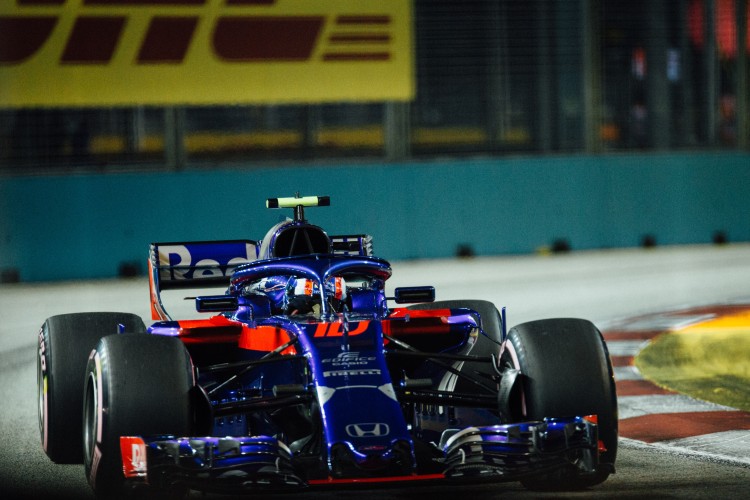
If you follow Formula One racing, you probably already have a good understanding of the majority of the sport’s technical aspects. You are surely also aware that a Formula One car is a tremendously complicated piece of machinery that is comprised of many different parts.
However, the engine is the most valuable component of a Formula One car. It is the engine, in conjunction with the other aspects of the car’s aerodynamic design, that determines the winner of the race.
So, how much horsepower do Formula One engines have? A Formula 1 car can generate approximately 1050 horsepower. This power, along with the design and other features of a Formula 1 car, results in a vehicle that can travel at speeds of about 250 mph.
An expert from the SCA stated that the power unit of a Formula 1 car, which consists of a V6 turbocharged engine, is capable of producing approximately 1050 horsepower. When this power is paired with the construction and other features of a Formula 1 vehicle, the result is a machine that is capable of reaching speeds of approximately 250 miles per hour (400 kilometers per hour).
According to the Guinness World Records, the record for the fastest land speed is 397.483 kilometers per hour, which was achieved by Alan van der Merwe (South Africa) for BAR-Honda on July 20, 2006, at the Bonneville Salt Flats in Utah, United States of America.
Honda’s Bonneville 400 project was a marketing experiment that aimed to test whether or not a Formula One car can be tuned to reach speeds of 400 kilometers per hour.
Alan van der Merwe, who served as the team’s development driver, was the one who piloted the modified Honda RA106. In 2009, he was promoted to the role of F1 Medical Car Driver.
Note: According to the FIA, der Merwe recorded flying speeds of 397.483 kilometers per hour for one kilometer and 397.370 kilometers per hour for one mile at Bonneville. Despite this, the crew was able to reach a high speed of 413.205 kilometers per hour while conducting tests in the Mojave Desert.
Further in this article, you can find all the information related to powerful Formula One cars, so if you are interested in learning more, you can proceed with reading.
Table of Contents
How Much HP Do F1 Cars Have?
Every season, Formula 1 is committed to continuing to push the boundaries of what is possible. This indicates that teams are strongly encouraged to promote greater aerodynamics, well–researched design and development, and occasionally even enhanced engine specs.
If you want to know How Much Does a NASCAR Car Cost? (IN DETAIL), click here.
Nevertheless, we are all aware that Formula 1 has restrictions in order to make racing competitive for each team. This means that teams need to find methods for pushing the limits within the constraints that have been set.
Costing millions of dollars per year, the process of engine development consumes a lot of money. The only way to accurately measure the results is to look at the horsepower of the engine.
As was just indicated, the expected horsepower of the engines used during the previous season is 1050 horsepower. A portion of that energy is stored within the electrical unit. As the vehicle gains power and velocity, the energy that is produced is saved in this module.
If you want to know 12 Best Low-Cost Sim Racing Wheels (DETAILED DESCRIPTION) , click here.
This is then used during the race anytime the drivers need a boost or greater power to slow down the vehicle when requires extra power to slow down the automobile. Although it is not exactly the same as DRS, it is very similar.
Note: Before continuing, it is essential that you have a solid understanding of the fact that the horsepower rating of an automobile’s engine does not necessarily correspond to the vehicle’s overall performance. Many factors should be taken into account.
How Quickly Can an F1 Car Go from 0 to 60 Miles Per Hour?
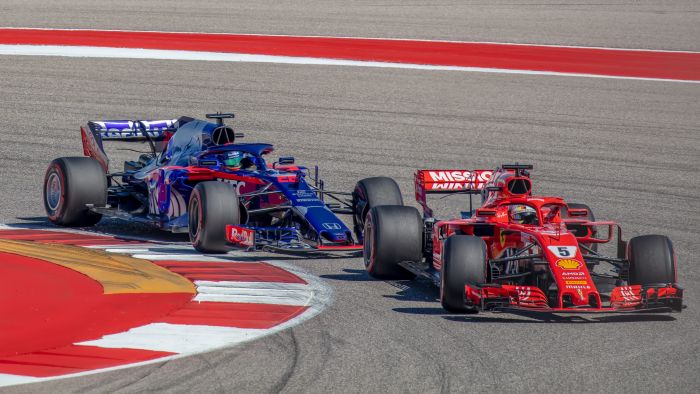
It takes Formula One vehicles around 2.6 seconds to accelerate from 0 to 60 mph. This may seem slow in comparison to their top speed, but they are unable to exert their full power when moving from a stop since a significant portion of their velocity is contributed by aerodynamics.
This can be affected by a variety of factors, such as the tire composition that is used and the structure of the car chassis. In addition to that, we need to evaluate the driver’s abilities.
Note: Formula One (F1) engines are, to put it succinctly, high-octane beasts. The production of them requires a significant investment of time and effort, in addition to a substantial quantity of resources. On the racetrack, the crew that has access to the most resources is typically the one that finishes first.
After clocking in at 231.4 miles per hour (372.5 kilometers per hour) at the 2016 Mexican Grand Prix, Valtteri Bottas is the current holder of the record for the quickest time in an F1 race.
Although the cars that compete in Formula One are quick, the single-seaters that compete in the IndyCar Series are even quicker.
If you want to know How Many F1 Drivers Have Died? (CHRONOLOGICAL), click here.
Although F1 cars are slower when traveling in a straight line, because of their priority on downforce and cornering speeds, they are actually faster over the length of an entire lap.
The Circuit of the Americas plays host to both Formula One and IndyCar events. In 2019, the inaugural IndyCar race saw a pole time of 1 minute, 46 seconds, and an average speed of 186.349 kilometers per hour.
Conversely, Valtteri Bottas’s pole time in 2019 was 1 minute, 32 seconds, with an average speed of 206.374 kilometers per hour.
Although the fastest speed achieved during a race is 231.4 miles per hour (372.5 kilometers per hour), the fastest speed achieved in an F1 car is far higher.
The current record was set by Honda’s RA106, which traveled to the Bonneville Salt Flats in the United States, which is a location known for its fast rides, in an effort to go faster than 400 kilometers per hour.
Despite the fact that they were unsuccessful, they did establish a new record for the fastest F1 car by reaching a high speed of 246.9 mph (397.36 kilometers per hour).
If you want to know How Long Is a Formula One Season? (For The Fans), click here.
How Are Formula One Cars Able to Generate So Much Power?
Let’s get into the nuts and bolts of how these incredible numbers are produced by Formula One vehicles without getting too technical.
Automobiles are indispensable to our day-to-day existence. It’s possible that you get to work each day in a taxicab, even though you own a car and drive it yourself.
When you examine the instrument panel of a vehicle, you will notice a collection of gauges that each display a unique combination of information. While you are moving, you may keep an eye on the vehicle using this method.
If you want to know What Are The Best F1 Simulators? (ON THE MARKET), click here.
The tachometer is one of the gauges that may be found here. The tachometer in your vehicle will show the revolutions per minute (RPM) of the engine. RPM is an abbreviation for “revolutions per minute,” and it indicates the rate at which your engine is turning over.
The RPM is typically denoted by a single digit, like 1, 2, 3, and so on, though this is not always the case. Multiplying this number by 1000 will give you the actual RPM; for example, 1000, 2000, 3000, and so on. The tachometer is typically located next to the speedometer in a vehicle’s dashboard.
Note: Engines used in Formula One may reach rpm of anything from 15,000 to 22,000 per minute.
The more power that is packed into these engines, the faster they spin. The revolutions per minute (RPM) of an engine have a direct impact on both its torque and its horsepower.
An F1 engine’s ability to rev at such astounding rates is made possible by the high bore/stroke ratio of the engine. In essence, the vehicle has a longer stroke but a shorter bore than its competitors.
Note: Additionally, keep in mind that the reason a Formula 1 engine is so rapid is that it can rev at speeds that are significantly greater than those of most engines.
The maximum RPM for the typical automobile is 6000. This restriction is adhered to by even the most extreme automobiles since it ensures the vehicle’s continued viability over time. As was mentioned earlier, the RPM range for Formula One engines is from 15000 to 22000.
If you want to know What Is the Top Speed of an F1 Car? (AMAZING!!!), click here.
What Are The Fundamental Parts Of An F1 Engine?
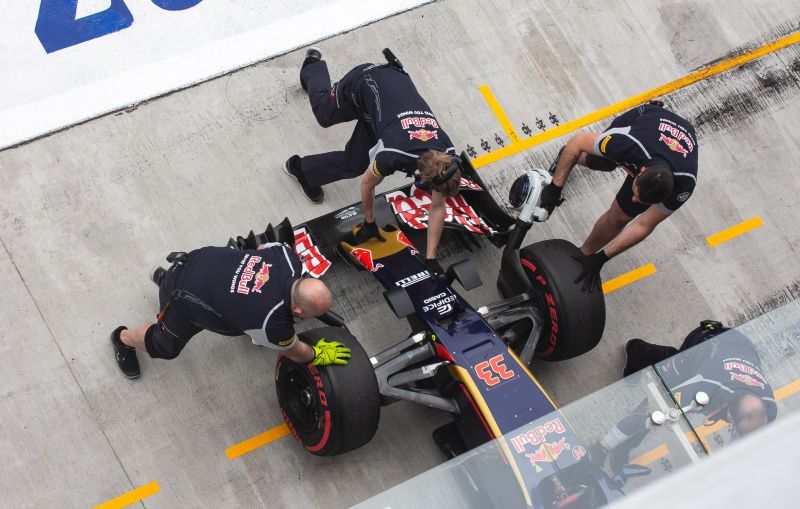
The Main Parts
In addition to the engine, which is comprised of a great number of distinct subcomponents, there are a few additional essential pieces that play an important role in the entire power of the vehicle.
The motor generator units, often known as MGUs, are two of these different components.
When the driver takes his foot off the gas pedal, the MGU-K is activated, which causes the rear wheels to begin to slow down, which in turn causes the MGU-K to produce electrical power.
This electricity is transferred to the Energy Store, often known as the ES. In order to make use of unwanted exhaust gases, the MGU-H collaborates with the turbocharger.
It also sends power back to the ES, which can then be applied to power the wheels or the compressor in the turbocharger.
If you want to know How Much Does an F1 Pit Crew Member Earn? (INTERESTING FACTS), click here.
The Turbocharger
The turbocharger is a whole other essential part of the engine, and its presence enables a greater quantity of air to be introduced into the combustion chamber.
As a result, the engine is able to consume more gasoline and generate a greater amount of power. The energy recovery system, sometimes known as the ERS, of the Formula One automobile is comprised of all of these individual components.
The ERS is an essential technology that enables the engines to supply such a significant amount of power.
Which Formula One Engine Has the Highest Power of All Time?
In 1986, BMW debuted the engine that would go on to become the most powerful in the world. The BMW M12/13/1 was a truly monstrous machine. Benetton, Arrows, and Brabham were the three racing teams that made use of the engine. It registered 1100 horsepower on the meter.
Does this mean that Formula One cars were formerly capable of quicker speeds? No, it doesn’t. It is not necessary for a vehicle to have a robust engine in order for it to run adequately on a racetrack.
If you want to know What Are F1 Grid Penalties? (DETAILED EXPLANATION), click here.
Consider the lap that was completed in the quickest time ever recorded on a Formula One track. Bottas accomplished this task in 2016. At the time, Formula One automobiles were already equipped with 1.6-liter V6 engines.
What Formula 1 Race Car Has the Most Horsepower?
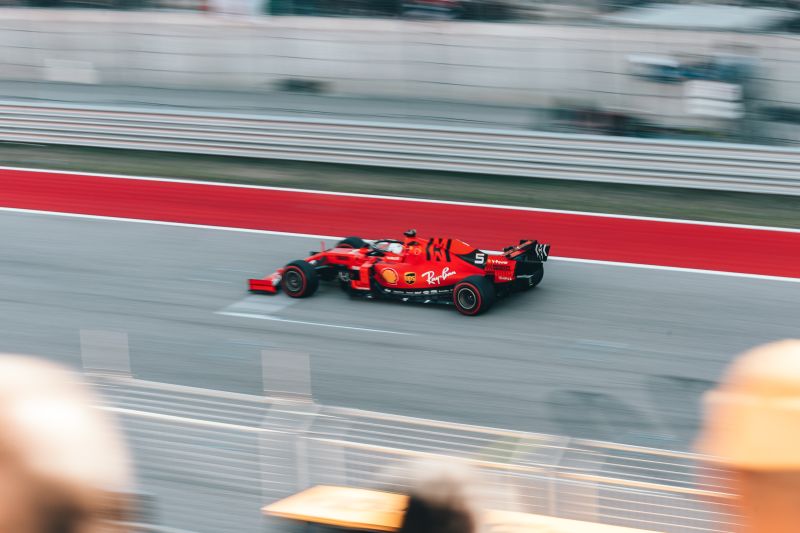
Formula One teams invest millions of dollars every season in an effort to be the greatest team out on the tracks. However, does this indicate that the present period has the most horsepower? Certainly not in every case.
If you want to know Why Do F1 Cars Have Sidepods? (INTERESTING FACTS!!!), click here.
We’d like to introduce you to the Benetton B186. Between the years 1983 and 1986, the B186, together with the Brabham BT52 and BT55, the Arrows A9, and many other automobiles powered by BMW engines, was consistently regarded as one of the most powerful Grand Prix cars ever constructed.
In qualification mode, the B186 was capable of producing more than 1,350 horsepower, while in the racing mode it produced approximately 900 horsepower. At the time, the B186 was the most competitive of the vehicles powered by BMW engines.
The B186 has a manufacturing history that is quite brief but rich in detail.
The Benetton team created the B186 and raced it in the 1986 Formula One World Championship. It was the first car Benetton produced and entered competitions. The company acquired the Toleman team at the end of 1985 after years of sponsoring it and other teams like Alfa Romeo and Tyrrell.
Benetton did not have sufficient time to build a car that was ready for competition in time for the Formula One World Championship in March of 1986. In spite of this, three B186s were finished in time for the race, and a further four chassis were finished throughout the season.
Toleman TG186 was the original designation given to the chassis design for the year 1986. After that, Benetton decided to switch from the privateer Hart 415T engines to an engine supplied by BMW. These engines had previously been powering the Formula 1 chassis of Toleman from 1981.
If you want to know Why Are F1 Cars Getting Bigger? (WHAT YOU DIDN’T KNOW), click here.
The frame of the BT186 was designed to be more robust than its predecessor in order to accommodate the 600 bhp (447 kW; 608 PS) increase in qualifying and the rise of around 200 bhp (149 kW; 203 PS) in race trim, given that the turbocharged BMW engine was clocked at 1,400 horsepower (1044 kW; 1419 PS).
At Monza, Gerhard Berger achieved the season’s maximum top speed of 352 kilometers per hour, which is equivalent to 219 miles per hour. Teo Fabi finished in second place, and both drivers were driving B186s.
It is true that the B186s were not competitive at first because the crew battled with the power delivery of the BMW engine, which was described as being like a “light switch.”
They also had a difficult time because there was a dearth of replacement parts, and the huge power of the BMW engine put pressure on the chassis, making it difficult for them to work on the vehicle.
Note: The team was also at an early disadvantage because of its collaboration with the tire provider Pirelli, at a time when the majority of the top-performing teams were using Goodyears. During preseason testing, neither the team nor fellow Pirelli user Brabham was able to complete many laps, so the Italian company relied primarily on data from the Ligier team.
The B186s, on the other hand, had already developed into their ideal selves by the time the championship was halfway through the season.
During the course of the season, the B186 underwent a number of modifications that were designed to improve its aerodynamic qualities.
These modifications included adjustments to the front and rear wings, as well as alterations to the underbody.
In addition to that, there were new suspension packages and updated principles for the setup. In order to withstand the strain that the BMW engine exerted, the chassis of the B186 needed to be strengthened.
The development package was finished when a new rear wing design was introduced during the Austrian Grand Prix. This brought the package to its full conclusion.
Because of the significant performance upgrades brought about by the changes, the B186 became the quickest vehicle on the circuit when Teo Fabi and Gerhard Berger were behind the wheel.
Because of the aforementioned enhancements, the performance of the automobile improved during the course of the season, notably in the second half of the competition.
If you want to know What is Formula 1 DRS? (THINGS YOU DIDN’T KNOW), click here.
Additionally, it became more consistent, despite the fact that there were 19 retirements out of 32 starts.
As a result of the abrasive surface of the Autódromo Hermanos Rodríguez, the performance of the Pirelli tires increased as well, and their relative sturdiness, particularly when compared to the Goodyears, frequently performed to the B186’s advantage. This was demonstrated by Berger’s victory in the 1986 Mexican Grand Prix.
In the second qualifying round at Monza, Berger’s B186 reached a season top speed of 351.22 km/h (218.23 mph), with Fabi coming in second at 349.85 km/h (217.38 mph).
At the time, Berger’s speed trap would have been the second-fastest in Formula One during the first turbo period (1977-1988), behind only Nelson Piquet’s actively suspended Williams-Honda, which reached a qualifying speed of 352.135 km/h (218.807 mph) at Monza for the 1987 event.
Note: Benetton significantly beat rival BMW users Brabham and Arrows in 1986 and was normally the fastest team using Pirelli rubber. This was regardless of the fact that the more dependable Ligier team collected more points with the turbocharged Renault V6 engines.
BMW and Pirelli were both taken aback by this development because both companies had anticipated that Gordon Murray’s unusual and low-line Brabham BT55 would be their quickest customer.
The B187, which was powered by a Ford turbocharger, took the place of the B186 for the 1987 season.
Who Determines Which Engines Are Allowed in Formula One?
When it comes to constructing an F1 car, there are a lot of rules and regulations to follow.
In the event that a manufacturer fails to fulfill certain requirements, they will face harsh penalties, and in the most severe of circumstances, they will not be permitted to compete in any races during that season before they get everything under control.
Since it is difficult to regain your spot in Formula One once you have left the series, race teams are unable to afford to do this.
The Formula One World Championship is overseen by the FIA. Research and development are one of the areas in which they invest millions of dollars each year.
The governing body of Formula One is responsible for determining not only the rules that will be used for each F1 season but also the standards that car makers and drivers must adhere to with their vehicles.
When formulating their guidelines, the members of this regulatory body take a number of specific considerations into account. These considerations could include things like:
- Equality
- Availability
- Security
They take into account other factors as well, such as the climate. Back in the day, when Formula One teams employed their 3.5–liter and 2.5–liter V8 and V10 engines, the sport was subjected to a great deal of criticism.
These engines were not only a waste of power and materials, but they also posed a threat to the natural world. They additionally contributed to the problem of noise pollution.
The disruption of animals‘ native habitats or the animals‘ adapted habitats, as the case may be, is one of the ways in which noise pollution has an impact on the ecosystem.
In general, it is imperative that the FIA maintains its current level of activity because the organization is making significant advancements in terms of both ecological consciousness and protection.
Note: Consider the accident that happened in Bahrain in 2020 with Romain Grosjean. He was opposed to the FIA–mandated Halo device that was installed on Formula One vehicles. Following his mishap, he declared while he was being treated in the hospital that the Halo had prevented him from dying.
Are the Older F1 Cars More Powerful and Faster than Modern Ones?
Formula One is not an example of something that can be described using the word “slow.” The world of motorsport is constantly evolving alongside technological advancements.
Are you fascinated by the historic racecars that competed in the unique world of F1? In this part of the chapter, we delve deeper and uncover more information on the beasts that ruled the race tracks.
It is anticipated that today’s Formula One vehicles will be twice as swift as the previous ones. On the other hand, the older Formula One vehicles were fairly quick as well.
The Formula One cars that competed in the 1950s and 1960s had top speeds of 290 kilometers per hour and could accelerate from 0 to 100 kilometers per hour in about 4 seconds.
Note: In the past, the tubular shapes of Formula One cars were made for relatively straightforward aerodynamics. Narrow-tread tires and front-mounted engines of either 1.5 liters or 4.5 liters of naturally aspirated displacement were also standard equipment on these vehicles.
In 1955, they started moving the engines to the rear of the vehicle to increase speed while also reducing the overall weight of the vehicle.
As time went on, automobiles became less cumbersome, more aerodynamic, and quicker. In the 1960s and 1970s, various aerodynamic designs, such as wings, came into widespread use.
The vehicle’s grip was improved in the late 1970s with the installation of side skirts and an underbody layout, allowing it to accelerate quickly through curves and race down the tracks.
It wasn’t until 1981 that the carbon fiber chassis was invented, and it wasn’t until the 1980s that electronic driving aids became available to enable drivers to have a stronger grip on their automobiles.
In the 1990s, the first examples of semi–automatic transmissions and traction controls appeared on the market.
As a result of the concentration in Formula 1 on making vehicles lightweight to develop aerodynamics and, as a result, boost performance, it should come as no surprise that the cars of today are significantly faster than those of the past.
If you want to know What’s the Difference Between IndyCar and F1? (YOU DIDN’T KNOW), click here.
Which Formula One Cars Are Easier to Drive: Modern or Early Models?
There is no doubt that driving has developed over time as a result of the countless advances and improvements that have been made to automobiles.
The Formula One cars of today are virtually unrecognizable compared to those of the last 25 or 50 years; nevertheless, does this suggest that they are simpler to drive?
Modern automobiles are more comfortable to drive since they are quite balanced on the track, are easier to turn, and feature power steering.
On the other side, driving an older automobile required more physical effort due to its bulky turning radius and the driver’s constant battle to keep the car on the track; in addition, there weren’t paddle shifters, so drivers had to constantly change gears by hand.
It is important to keep in mind that drivers of current vehicles may modify and control a large number of settings; this is one of the reasons why present steering wheels contain a number of buttons.
As a result of having to consider all of these settings while driving, drivers are subjected to a level of mental strain that was not present in the past.
FAQ: Fans Also Ask
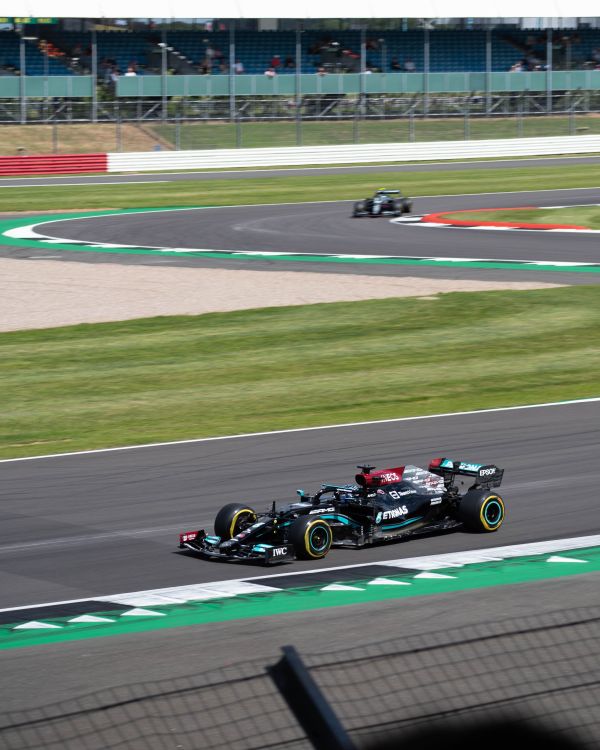
Why Did Formula One Make the Change to V6 Engines?
It is imperative that we put an end, as soon as possible, to the widespread belief that a Formula One vehicle with more power is also a faster car. In that case, how does a V8 engine vary from a V6 engine?
In the simplest terms, a V8 engine results in a significantly larger displacement than a V6 engine. If this is the case, then why does it not translate into greater overall performance?
However, at some point in time, the power output of the engine must be equaled by the displacement of the vehicle’s chassis and, most importantly, the tires. Your tire will spin if the displacement is too high.
The efficiency of a vehicle can be greatly hindered if it has a tire spinning at the beginning of the race or as it is exiting a turn. It would be in your best interest to take into account the weight of big engines as well.
It is essential to consider the power-to-weight ratio. Why would you want a stronger engine if all it did was move a heavier automobile forward?
Note: In everyday use, it is possible to obtain the same level of efficiency with a standard engine and a car that is generally lightweight as it is possible to obtain with a big engine that is housed within a car that is larger.
One other factor to point out is that the FIA has attempted, to the best of its ability, to make Formula One more available to the lower-tier teams.
Putting size limits on the engines is one approach that can be taken here. Nevertheless, as was mentioned earlier, there are some businesses that have the resources necessary to create superior engines while adhering to those constraints.
Which Other Types of Engines Have Been Used in Formula One?
In the early years of Formula One racing, the vehicles all had V12 engines. These engines were very popular among fans. Unfortunately, after the development of more advanced technology, it was discovered that these engines were not very effective. 1996 was the year when they were taken out of the “roster”.
Note: There was also a brief experiment with V10 engines in Formula One, although that didn’t do so well.
Additionally, the V8 was utilized for a number of years. Each of these engines has a number of advantages and disadvantages. Both fans and racers have a soft spot in their hearts for the V12 engine. Nevertheless, the integrity of Formula One is heavily dependent on longevity.
Who Makes the F1 Engines?
4 engine makers are officially supplying engines to Formula One teams for the 2022 F1 season. These manufacturers are Ferrari, Mercedes, Renault, and Honda.
Engines manufactured by Mercedes are utilized by Aston Martin and McLaren, while engines manufactured by Ferrari are utilized by Haas and Alfa Romeo, whereas engines manufactured by Honda are utilized by Red Bull and AlphaTauri.
However, given that Formula One has already outlined the framework for the next set of engine regulations, all of that might be subject to modification by the year 2026.
Note: Some people are hopeful that the new engine limitations may inspire Audi, Porsche, and other manufacturers to participate in the sport. Mike Krack, the new team leader at Aston Martin, has hinted that Aston Martin will keep a careful eye on things.
In the year 2026, the engines used in Formula One will become significantly more environmentally friendly, with a primary focus on reducing the costs incurred by the teams who build them.
The 1.6-liter V6 engine, which was introduced for the first time in 2014, will continue to be used, however, the electrical power will be raised to 350 kW.
The complicated MHU-H will also be removed from the power unit. This will make Formula One an attractive showground for hypothetical new companies such as Audi and Porsche to use their own engines and cars if they choose to do so in the future.
In addition to this, there will be a price ceiling on power units, that will most certainly have the same impact.
How Much Does It Cost to Make an F1 Engine?
When development is taken into account, the cost of manufacturing a Formula One engine is between $10 million and $11 million. This is a significant financial investment.
Consider the French automaker Renault, which is involved in the Formula One racing series. Renault is partially controlled by the French government.
They haven’t been in the running for the championship in quite some time. On the other hand, one of their rival teams commissioned them to build an engine for them.
When they constructed an engine for Red Bull, they did not use any of their own resources. Rather, they decided to use the funds provided by Red Bull to develop a new engine.
Therefore as result, they could construct a superior machine for their rival, which is impossible for them to do for themselves due to the high cost involved.
Honda, which has a history of producing some of the most successful engines in Formula One history, was awarded the contract to build engines for Red Bull after Renault was relieved of their duties under the agreement.
Conclusion
The Formula One racing series prioritizes technological advancement and innovation. It is for this reason that every year, we witness vehicles that are slightly different from those of the previous year.
I hope you liked this article and that you have found the answer to your question.
